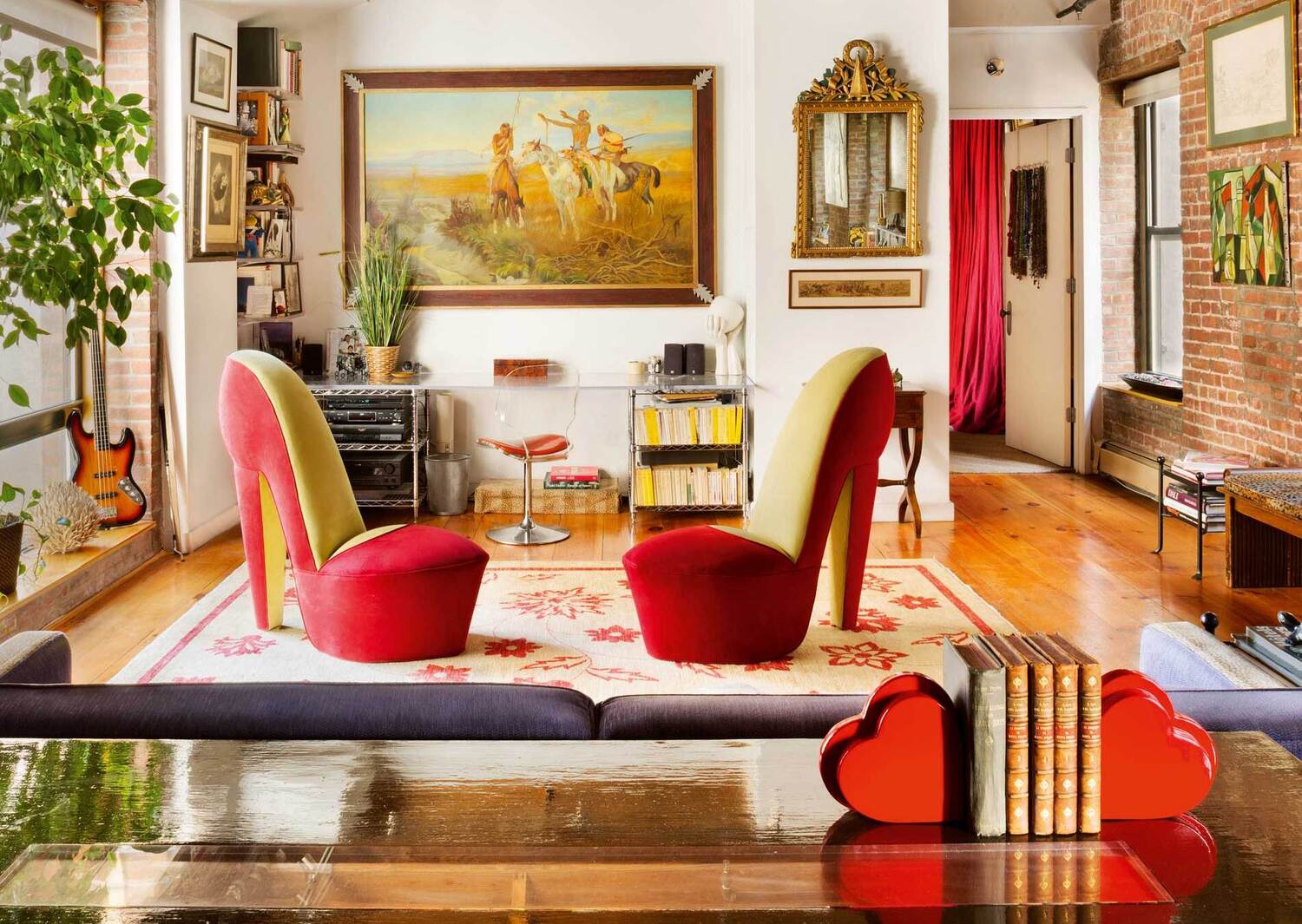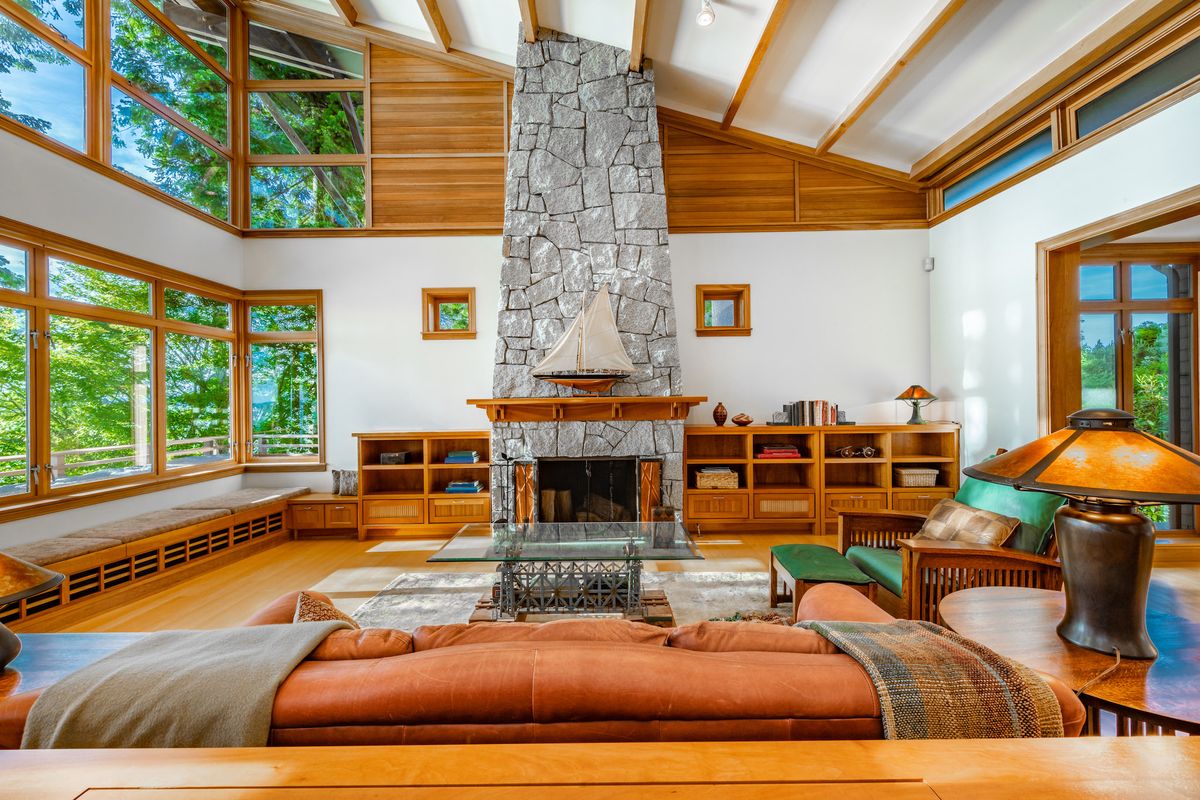Home>Interior Design>5 Interior Design Lessons From The Gleneagles Townhouse


Interior Design
5 Interior Design Lessons From The Gleneagles Townhouse
Modified: January 19, 2024
Discover 5 valuable interior design lessons from the Gleneagles Townhouse. Enhance your home with expert insights and transform your living space.
(Many of the links in this article redirect to a specific reviewed product. Your purchase of these products through affiliate links helps to generate commission for Storables.com, at no extra cost. Learn more)
Introduction
Welcome to the world of interior design, where creativity and functionality come together to transform spaces into beautiful havens. Whether you’re designing your own home or working with clients to create their dream spaces, there are always valuable lessons to be learned from established design projects. In this article, we will explore five interior design lessons from the Gleneagles Townhouse – a stunning example of timeless elegance and sophistication.
Located in the heart of a bustling city, the Gleneagles Townhouse is a sanctuary that seamlessly balances contemporary elements with classic touches. It offers a refined and luxurious living experience, where every corner reflects a commitment to high-quality design. So, let’s delve into the lessons this exceptional project has to offer.
Key Takeaways:
- Embrace natural light to create a warm and inviting ambiance in your interior spaces. Strategic window placement, mirrors, and light control can transform a room while boosting mood and well-being.
- Prioritize functionality, comfort, and personal touches to design spaces that are not only visually appealing but also livable, personalized, and engaging. Incorporate luxurious textures and neutral colors for timeless elegance.
Lesson 1: Embrace Natural Light
One of the most important aspects of interior design is the effective use of natural light. The Gleneagles Townhouse demonstrates the transformative power of natural light in creating a bright and welcoming space. Large windows adorn every room, allowing an abundance of sunlight to flood in and create a warm, inviting ambiance.
When incorporating natural light into your own designs, consider the orientation and placement of windows. South-facing windows tend to receive the most direct sunlight, while east-facing windows offer a vibrant morning glow. Utilize different window treatments, such as sheer curtains or blinds, to control the amount of light entering the space and maintain privacy when needed.
Additionally, strategic positioning of mirrors can further enhance the impact of natural light. Mirrors help amplify sunlight by reflecting it throughout the room, making it appear larger and brighter. Consider placing mirrors directly across from windows or in hallways to maximize their effectiveness.
Remember, natural light not only illuminates a space but also has numerous health benefits. It boosts mood, improves productivity, and promotes a sense of well-being. So, when designing your interiors, embrace and optimize the beauty of natural light to create a harmonious and uplifting atmosphere.
Lesson 2: Use Neutral Colors as a Base
Neutral colors serve as the foundation of any well-designed space, and the Gleneagles Townhouse perfectly exemplifies this concept. By choosing a neutral color palette, the designers have created a timeless and elegant ambiance that allows other design elements to shine.
When employing neutral colors, consider shades of white, beige, cream, and gray. These colors provide a versatile backdrop that can be easily complemented with pops of color or different textures. A neutral base also helps create a sense of harmony and balance within the space.
Neutral colors can be applied to walls, furniture, and textiles, allowing for a seamless flow throughout the room. They also create a visually calming environment, making the space feel serene and inviting. Additionally, neutral colors tend to make a room appear larger and more spacious.
When experimenting with neutral colors, don’t be afraid to mix different shades and textures. Layering various tones of neutral colors adds depth and dimension to the space. Consider incorporating elements like textured pillows, rugs, or upholstered furniture to add visual interest. Accents of metallic finishes, such as gold or silver, can also add a touch of glamour to a neutral palette.
Neutral colors are not only aesthetically pleasing but also provide flexibility for future design changes. They serve as a reliable base that can be easily refreshed by swapping out accessories, artwork, or textiles when desired. So, embrace the versatility and elegance of neutral colors as a foundation for your interior designs.
Lesson 3: Incorporate Luxurious Textures
Texture plays a vital role in interior design, and the Gleneagles Townhouse showcases the power of incorporating luxurious textures to elevate a space. By blending different textures throughout the rooms, the designers have created a visually rich and tactile experience.
When considering textures, think beyond just visual appeal. Textures can evoke emotions and add depth to a space. In the Gleneagles Townhouse, you’ll find a combination of plush velvet upholstery, soft cashmere throws, and smooth marble surfaces. These elements create a luxurious and comfortable atmosphere.
Introduce texture through various materials such as silk, leather, fur, or rattan. Incorporating elements like knitted cushions, woven rugs, or patterned wallpaper can add visual interest and create a warm and inviting atmosphere. Mixing different textures also adds dimension and contrast to a space.
Consider the juxtaposition of rough and smooth textures to create a dynamic visual impact. For example, pair a sleek, glossy table with a rough-textured sisal rug or add a velvet accent chair to a room with leather furniture. These combinations create a visually stimulating environment that invites touch and engagement.
When incorporating luxurious textures, it’s essential to strike a balance. Avoid overwhelming the space with too many bold textures that can compete with each other. Instead, opt for a few carefully selected pieces that enhance the overall aesthetic.
Remember, textures not only add visual interest but also contribute to the overall comfort and coziness of a space. By incorporating luxurious textures, you can create a truly captivating and inviting environment.
When designing a space, consider the use of natural materials such as wood, stone, and leather to create a warm and inviting atmosphere.
Lesson 4: Prioritize Functionality and Comfort
When it comes to interior design, it’s crucial to prioritize functionality and comfort, and the Gleneagles Townhouse exemplifies this principle. Every element in the space is not only aesthetically pleasing but also serves a practical purpose, creating a harmonious and livable environment.
When designing a space, think about how it will be used and ensure that the layout and furniture arrangement allow for easy movement and functionality. Consider the flow of the room and how people will interact within the space. This will help you determine the most suitable furniture placement and design choices.
Comfort is equally important in the design process. Provide ample seating options that are both stylish and comfortable. Incorporate plush sofas, cozy armchairs, and ergonomic furniture to create inviting spaces where people can relax and unwind.
Consider the functionality of storage solutions as well. Incorporate built-in cabinets, shelves, and hidden storage spaces to keep the room organized and free from clutter. Clever storage solutions allow for a streamlined and tidy appearance, making the space more enjoyable to live in.
Lighting is another aspect of functionality to consider. Ensure that there is a balance of ambient, task, and accent lighting throughout the room. This will create the right mood and atmosphere while also providing adequate illumination for daily activities.
Additionally, don’t forget about the importance of acoustics in a space. Incorporate elements such as rugs, curtains, or acoustic panels to minimize noise and create a more peaceful environment.
When designing with functionality and comfort in mind, always consider the needs and preferences of the occupants. Strive to create a space that not only looks beautiful but also enhances the everyday experiences of those who live or work in it.
Lesson 5: Add Personal Touches and Artwork
Incorporating personal touches and artwork is a key lesson we can learn from the Gleneagles Townhouse. By adding these personal elements, the designers have created a space that is unique and reflects the personality and interests of the homeowners.
When designing a space, consider the individuality of the occupants and their personal taste. Incorporate elements that have sentimental value, such as family photographs, cherished mementos, or heirlooms. These personal touches add a layer of authenticity and create a sense of belonging in the space.
Artwork also plays a crucial role in adding character to a room. Choose artwork that resonates with the overall design aesthetic and evokes an emotional response. This could be anything from paintings and sculptures to photography or mixed media installations.
When selecting artwork, consider the scale and proportion of the pieces in relation to the space. A large statement artwork can become a focal point and anchor the room, while smaller pieces can be grouped together to create a curated gallery wall.
Experiment with different art mediums and styles to create visual interest. Mix abstract pieces with more traditional or contemporary works to add depth and contrast. Don’t be afraid to be bold and eclectic in your choices, as art can be a powerful tool for self-expression and storytelling within a space.
Lastly, consider the placement of artwork. Create focal points by highlighting key areas such as above a fireplace or behind a sofa. Pay attention to the balance and symmetry of the artwork in relation to the surrounding elements.
By incorporating personal touches and artwork, you infuse the space with a sense of identity and create a truly personalized and engaging environment. It allows you to showcase your individuality and make the space feel like home.
Conclusion
The Gleneagles Townhouse serves as an inspiring example of exemplary interior design, offering valuable lessons that can be applied to any space. By embracing natural light, using neutral colors as a base, incorporating luxurious textures, prioritizing functionality and comfort, and adding personal touches and artwork, you can create spaces that are not only visually appealing but also functional and personalized.
Natural light brings warmth and vibrancy to a space, while neutral colors create a timeless and versatile backdrop for other design elements to shine. Luxurious textures add depth and richness, enhancing the sensory experience within a room. Prioritizing functionality and comfort ensures that a space is not just aesthetically pleasing but also livable and enjoyable. Personal touches and artwork infuse a space with character and make it truly unique.
As you embark on your own interior design projects, remember that each space is an opportunity for self-expression and creating a harmonious environment. Use these lessons as a guide, but also trust your intuition and creativity to design spaces that reflect your style and meet the needs of those who will inhabit them.
Whether you’re designing a cozy living room, a serene bedroom, or a functional workspace, the lessons from the Gleneagles Townhouse can be applied to create spaces that are visually stunning, functional, and personally meaningful. Embrace the art of interior design, and let your imagination and expertise bring life and beauty to every room you create.
Frequently Asked Questions about 5 Interior Design Lessons From The Gleneagles Townhouse
Was this page helpful?
At Storables.com, we guarantee accurate and reliable information. Our content, validated by Expert Board Contributors, is crafted following stringent Editorial Policies. We're committed to providing you with well-researched, expert-backed insights for all your informational needs.















0 thoughts on “5 Interior Design Lessons From The Gleneagles Townhouse”